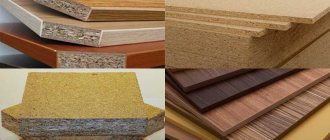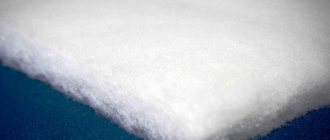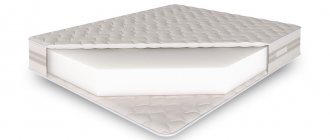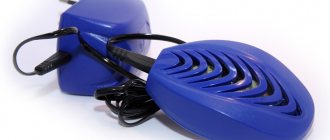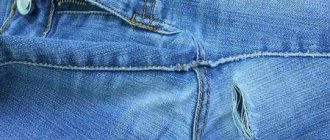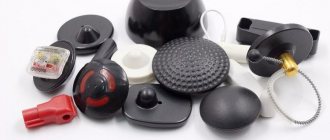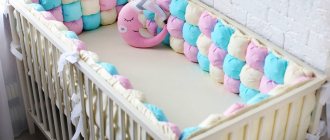Many buyers still don’t know which is better – holofiber or padding polyester. Both fillers are white, elastic, warm, made of synthetic fibers. Then why is there such a difference in price? And is it worth saving on filling for outerwear and bedding? After reading this article, you will see the differences between padding polyester and holofiber, and then make the right decision.
Description and properties of padding polyester
Sintepon appeared in 1935 in Great Britain. It is most often used as a filling for jackets, pillows, quilts, upholstered furniture and children's toys. Judging by reviews on the Internet, many people buy material the old fashioned way because they do not know about the benefits of new synthetic fabrics.
Mode of production
Synthetic winterizer is made from polyester fibers, the raw materials for which are petroleum products. Moreover, second-class waste is often used in production. This negatively affects the performance and service life of the product.
Synthetic fibers can be bonded in the following ways:
- Thermal . Polyester threads melt and bond under high temperatures.
- Needle-punched . The most modern and expensive technology, which is still rarely used. The fibers are held together by weaving and securing the multi-directional threads using toothed combs.
- Glueev . The simplest, cheapest, but not environmentally friendly way. Fibers glued together using latex emulsion disintegrate when washed. And in some people (especially children and the elderly), such fabric causes allergic reactions.
How to determine the production method of a material? Touch the surface of the canvas. Rigidity and the presence of a light crust indicate the use of glue.
Performance characteristics
Sintepon differs from holofiber in lower performance characteristics. Although they usually appear after some time. The main disadvantages of the material include the following:
- tendency to deform . Even after the first wash, the fabric may shrink or form clumps. To prevent deformation, you need to wash the product by hand or put tennis balls in the machine;
- low insulating properties . The filler is able to retain heat, but not for long. A person will freeze in such a jacket if the temperature drops below minus 8-10 °C. Therefore, demi-season items are more often made from synthetic padding than down jackets;
- the filler does not “breathe” . The polyester fibers fit too tightly together to allow air to pass through. That's why people sweat quickly in padding polyester jackets.
The advantages of the material include low weight, ability to hold its shape, and versatility. It does not breed dust mites, as in feather or down fillers.
However, holofiber also has the listed advantages. But the significant difference between padding polyester is its convenience in sewing production. It is easier to sew quilted items from such material.
Rules of care
The filler must be handled very carefully so that it lasts for many years. It is better to wash outerwear and bedding by hand using liquid detergents. Washing in an automatic machine is also allowed, but only on a delicate cycle and at low spin speeds (400-500). Do not use chlorine bleaches. Items made from adhesive synthetic padding will have to be dry-cleaned, as they can be damaged by home washing.
The label usually indicates how many degrees the product will withstand when washed. Usually this is no more than 30-40 °C. Clothes with padding polyester are dried in a vertical position (preferably hung on hangers) away from the heating radiator. Iron things with an iron at minimum temperature through cotton fabric.
Natural or artificial?
When choosing a down jacket, you need to start with the filling. When asked which insulation for a jacket is better, the answer quite often follows - of course, natural. Is this always the case? Natural down has, of course, a lot of positive qualities:
ability to retain heat well, lightness.
Yes, but these same qualities also distinguish artificial materials for filling down jackets! Moreover, sometimes they are even lighter than natural ones, and they retain heat better - at least some.
Description and properties of holofiber
Holofiber appeared on the market only in 2005. Today it is widely used in light industry (including the production of outerwear, bedding, toys), as well as for insulation and soundproofing of buildings, filtration of air systems.
Mode of production
Unlike padding polyester, holofiber is made from fibers that have gone through several stages of processing and are absolutely safe for health. The threads of the material are very thin and filled with air inside. Special equipment weaves them into multiple springs. The result is an elastic, soft, almost weightless fabric.
What is the difference between padding polyester and holofiber in appearance? The first has a white matte color, and the second has a snow-white glossy color. The synthetic winterizer feels dense and smooth, while the holofiber feels silky and loose.
Performance characteristics
Since there are many voids between the fibers of holofiber, it passes and retains air well. This material is warmer than synthetic winterizer. A person sweats less in it, which is why holofiber is widely used in the production of workwear, ski jackets and camping equipment.
In addition, the filler has the following characteristics:
- does not deteriorate under the influence of hot water, detergents and spin;
- easily restores its original shape;
- hypoallergenic;
- dries quickly;
- does not accumulate foreign odors.
However, holofiber is not a very pliable material. When you try to sew quilted items yourself, the filling slips and spreads inside the fabric.
Rules of care
It is easier to care for holofiber than padding polyester. No matter what temperature the water is, it will not spoil. However, it is better to wash outerwear at 40-60 degrees, since they are made from different synthetic materials.
Holofiber can withstand washing, spinning and even drying in an automatic machine. Items made from it can be dried in any position, but vertical is better. As a rule, products with such a filler are not ironed.
How to clean a product with down filling
Experts advise washing items filled with natural down only by hand. Detergents should be gentle, and the water temperature should not exceed 30 °C. Do not twist the item out of the basin, but lightly squeeze out the moisture. You need to dry a product with natural down in a horizontal position, laying it out on a sheet or on porous paper. It is necessary to ensure that there are no unpleasant odors in the room where the item is drying, because the fluff will “willingly” absorb them. It is better to dry blankets, pillows, jackets close to radiators, but not on them!
Which material is better - conclusion
The composition and characteristics of both fillers described above can be reflected in one table. Then it will become obvious which one is better.
Table 1 “Which is better: padding polyester or holofiber”
| Criterion for comparison | Sintepon | Holofiber |
| Health safety | + | |
| Durability | + | |
| Tactile sensation when wearing/using | + | |
| Ability to keep fit | + | |
| Thermal insulation | + | |
| Ventilation properties | + | |
| Pliability when sewing | + | |
| Easy to care for | + | |
| Versatility | + | + |
| Price | + |
Holofiber wins by a huge margin. Although the choice of this or that material largely depends on your goal. For example, budget padding polyester is quite suitable as a filler for decorative pillows.
Let's talk about laundry
A down jacket with natural filling is very difficult to wash in a washing machine:
Fluff tends to bunch up and penetrate through holes in the seams, which negatively affects the performance of your unit.
If the fabrics from which the top and lining are sewn are not of very high quality, the fluff is knocked out through the holes in the weaves.
Important! Before turning on the machine, you need to put your jacket or coat in a special bag - then the fluff will cause much less harm.
After the jacket is washed, you will have to lay it out on a horizontal surface. If you try to dry it on a line or even a hanger, all the filler will end up at the bottom or in the corners. This, of course, is not a problem that will ruin your life forever. But after the product has dried, you will have to evenly distribute what is inside it and tap your favorite thing with the most ordinary carpet beater. Sometimes you have to do this between washes. Therefore, down jackets with natural filling are most often made quilted. But with artificial material you won’t have to do anything like that.
Important! In expensive models, the natural down is in special bags; it does not bunch up as intensively, but you will still have to dry the products on the floor and pat them dry.
Standard
When choosing natural down, be sure to inquire about the standard to which it was processed. The label must read DIN EN 12934. This means that the fluff has gone through all the stages:
- soaking;
- washing;
- drying;
- filtration;
- sterilization
Important! Only in this case will a jacket with natural down be worn for a long time. Don’t forget to smell the product - it should smell like any new thing, without any impurities of mustiness and rot.
Reviews
I bought myself a blanket made from holofiber on the advice of a friend. At first I was still skeptical about synthetics. But I really liked it. Warm, soft, maintains temperature. I want to buy another one for my relatives.
Elena, Smolensk
I bought myself a jacket for the winter. I don’t want to bother with down jackets, so I decided to use artificial insulation. The store advised me to buy it with holofiber. I'm happy with the purchase, it warms well in winter.
Mikhail, Nizhny Novgorod
I have two preschool children. I always try to buy them quality clothes. I heard a lot of positive reviews about holofiber, so I bought overalls with it for the children for the winter. The result is that they never got sick last winter.
Tatyana, Omsk
Originally posted 2017-12-21 06:37:34.
Seams
Cheap models are made quilted, that is, stitched in squares or horizontal stripes. Sometimes expensive down jackets look the same. The difference is determined by touch - yes, we are talking about the very bags that are present in high-quality products and are absent in low-quality ones.
Important! In any case, pay attention to the seams. They should be smooth, beautiful, without tears or protruding threads. In a cheap quilted down jacket, the filling is located directly under the outer material.
The manufacturing technology is simple:
When sewing, the top and inside are quilted together along parallel lines, either vertical or horizontal.
The pockets are then filled with down.
After this, they quilt again, but perpendicular to the existing lines - in much the same way as quilts are sewn.
Unfortunately, with this technology, the fluff gets lost very quickly - first, “cold spots” are formed, then all the filler ends up in the corners. Bags made of special fabric, which are used in more expensive models, allow the natural filler to retain its shape longer. At the same time, the product itself looks like a regular coat or jacket, without additional seams.
Important! Don't forget to check if fluff is coming out through the holes in the seams. To do this, just bend the product at the seam and see if there is such a defect, it will certainly appear.
Application area
Despite some disadvantages, synthetic winterizer remains the most popular insulation material. It is used in the following cases:
- As layers of upholstered furniture. They fill sofas, armchairs, and ottomans.
- It is used to make sleeping bags, tents, and camping equipment.
- An excellent filler for winter dutik (quilted boots).
- For sewing demi-season outerwear: jackets, overalls, coats.
- They fill blankets, mattresses, and pillows.
- As a filter material in air conditioners and air systems.
- As insulation for some building elements.
